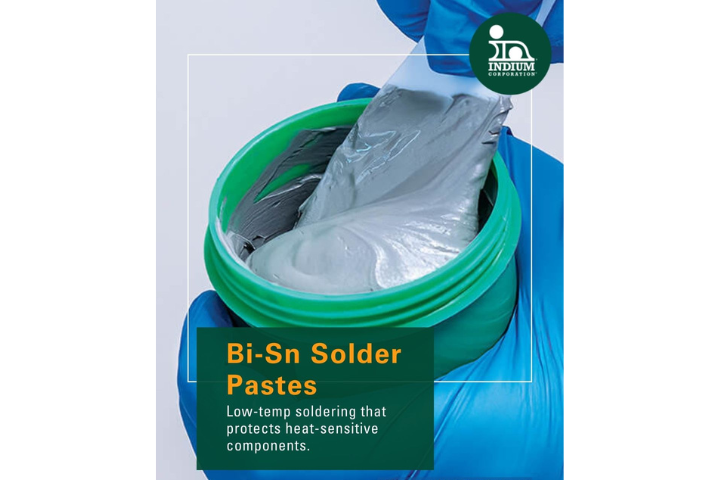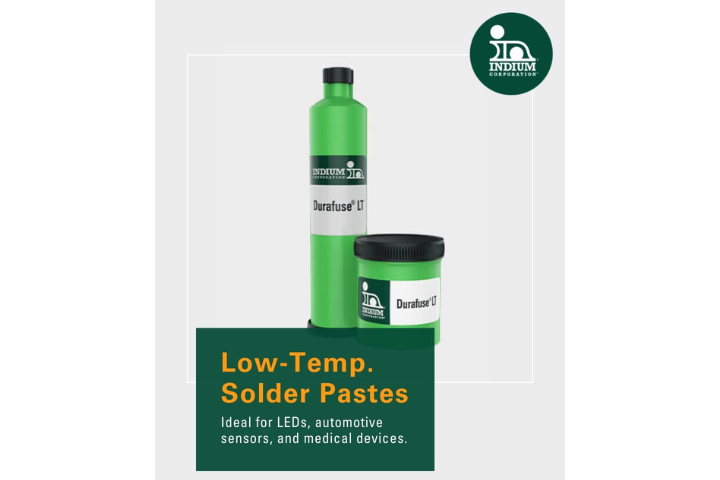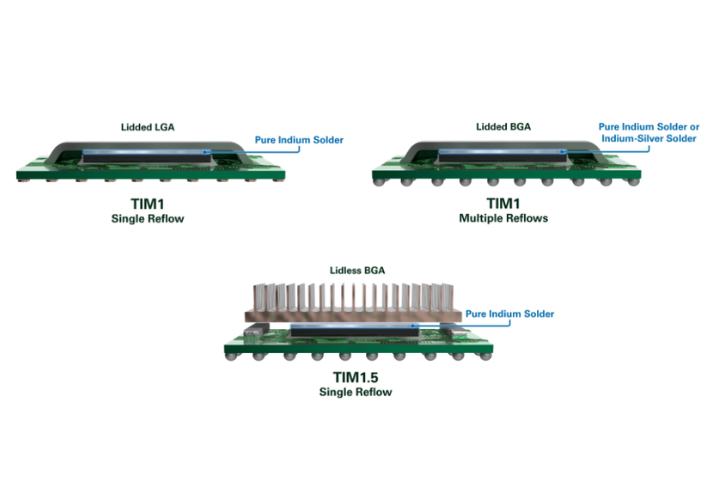The most common melting temperature range forstandard solders(like SnPb or SnPbAg)is in the 180°C to 190°C range, and the most popularPb-free alloys melt in the 220°C to
225°C. But, what do you do if you needa solder that reflows at a lower temperature? You might be soldering temperature-sensitive components.Or you might be performing astep-soldering operation, using a standard alloyfor the initial operation, and requiring a lower temperature solder for a subsequent step.
In addition to offering many desirable physical properties (malleability, ductility, fatigue resistance. etc.), indium alloys offer relatively low melting points.
Some of the more popular solder alloys are:
52In 48Sn (Indalloy 1E) 118C Eutectic
50In 50Sn (Indalloy 1) 125CLiquidus
97In 3Ag (Indalloy 290) 143CEutectic
80In 15Pb 5Ag (Indalloy 2) 154C Liquidus
99.99 Indium (Indalloy 4) 157CMelting Point
70In 30Pb (Indalloy 204) 175C Liquidus
50In 50Pb (Indalloy 7)210C Liquidus
Another low temperature need is not related to soldering. It simply requires that the material melt at a precise temperature. Indium is a constituent of many fusible alloys (used in fuse applications where the metal melts at a specified temperature, triggering a desired action – like a fire sprinkler to release water).



